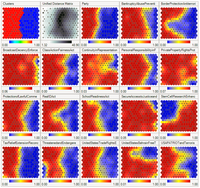
Photo from wikipedia
Multi-component seismic data contain a great deal of vector field information that reflects the situation of the underground medium. However, the processing methods used for multi-component seismic data are still… Click to show full abstract
Multi-component seismic data contain a great deal of vector field information that reflects the situation of the underground medium. However, the processing methods used for multi-component seismic data are still being developed, and effectively retaining and using this information is the difficulty and the focus of the task. Currently, the main-stream processing techniques of multi-component seismic data treat the individual components independently as a scalar field; in this way, they do not excavate the vector features of the wavefield, thus restricting the potential utilities of the effective information. Research into processing methods that are suitable for use with the vector field, which can better retain and use the orientations and the relative amplitude relationship between multi-component seismic data, is urgently needed and represent an important direction for the current development of multi-component seismic data processing techniques. In this paper, we introduce and summarize several existing vector pre-processing techniques, including polarization filtering, de-noising using vector order statistics, group sparse representation, and vector separation of compressional waves and shear waves, to help scholars develop more effective vector field processing methods and to promote the development of vector processing techniques for multi-component seismic data.
Journal Title: Applied Sciences
Year Published: 2019
Link to full text (if available)
Share on Social Media: Sign Up to like & get
recommendations!